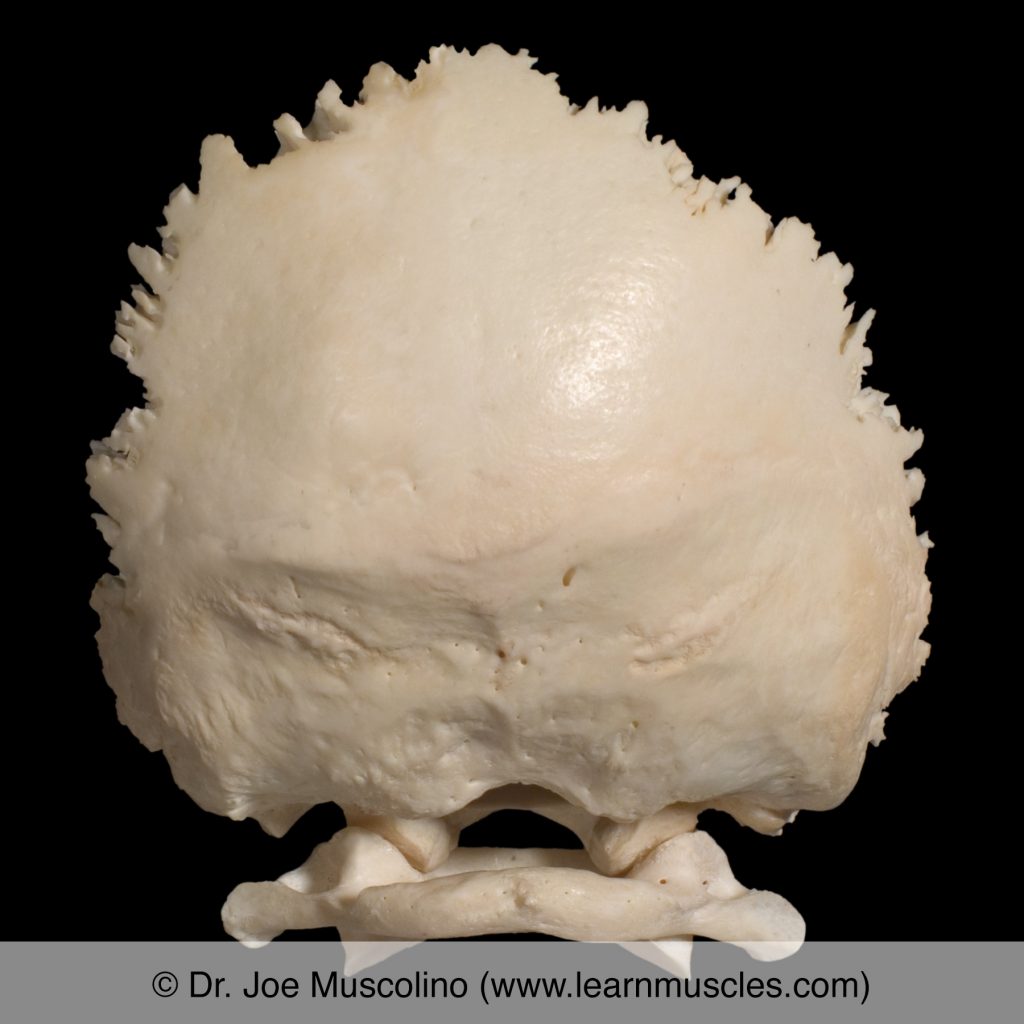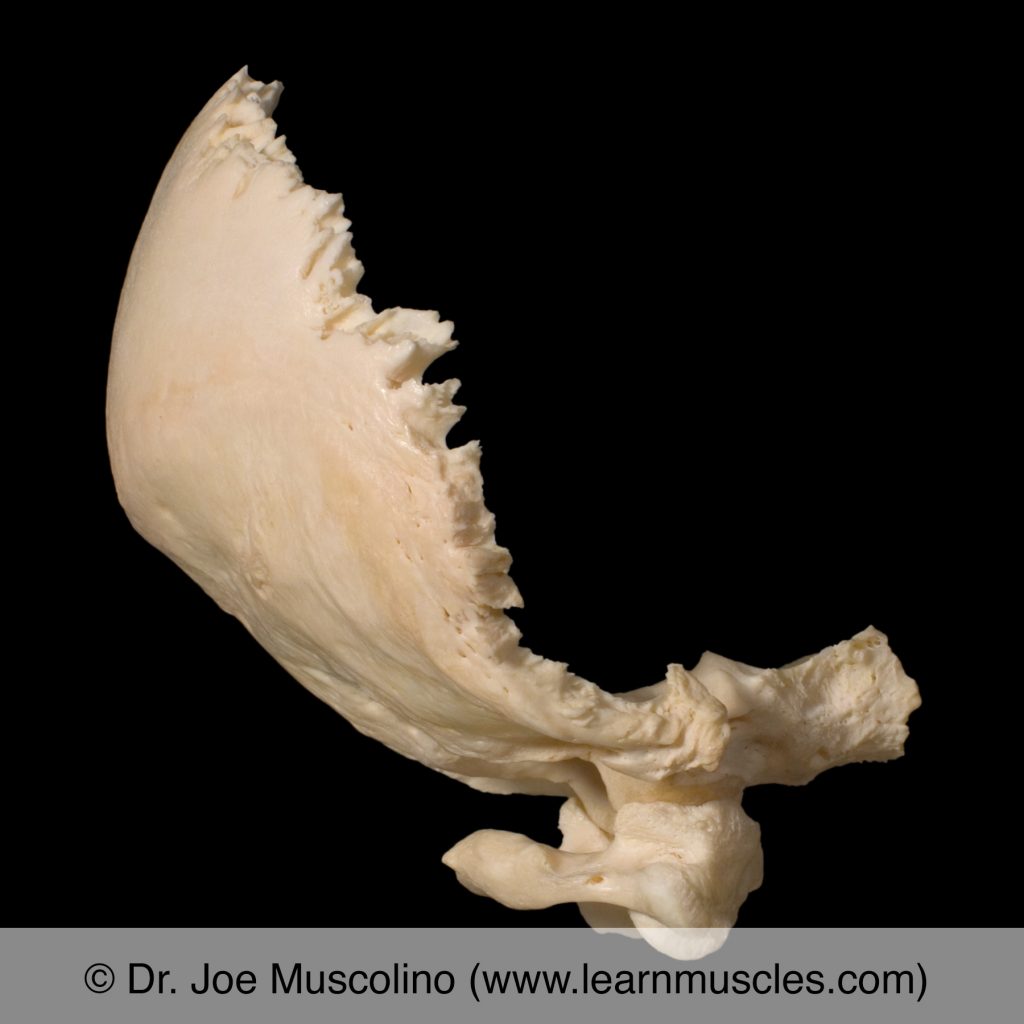- The atlanto-occipital joint (AOJ) is actually composed of two facet joints (paired, left and right) between the atlas (C1) and the occiput.
- More specifically, it is located between the superior articular facets of the atlas and the occipital condyles.
- Facet joints are synovial joints that allow motion in all three cardinal planes.
- The atlanto-occipital joint allows:
- flexion/extension of the head in the sagittal plane.
- right lateral flexion / left lateral flexion of the head in the frontal plane.
- right rotation / left rotation of the head in the transverse plane.
NOTES:
- Sagittal-plane extension is the greatest range of motion of the head at the atlanto-occipital joint.
- Because the atlas has no body, there is no disc joint between the atlas and the occiput.
- The head can also protract and retract at the atlanto-occipital joint. Excessive protraction of the head is a postural distortion pattern known as forward head posture or forward head carriage, which is a part of a larger postural distortion pattern known as upper crossed syndrome.

Posterior view of the atlanto-occipital joint between the atlas (C1) and the occiput.

Right lateral view of the atlanto-occipital joint between the atlas (C1) and the occiput.
